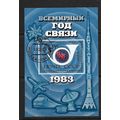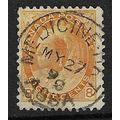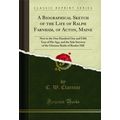Rackham, Arthur - Rat & Mole Having a Picnic from Wind in the Willows - postcard
- Condition : Used
- Dispatch : 2 Days
- Brand : None
- ID# : 138251220
- Quantity : 1 item
- Views : 179
- Location : United Kingdom

- Seller : justthebook (+1703)
- Barcode : None
- Start : Fri 10 Apr 2015 09:12:29 (BST)
- Close : Run Until Sold
- Remain : Run Until Sold
More Listings from This Seller view all
Seller's Description
- Art Postcard
- Work of art title: Rat and Mole Having a Picnic for Kenneth Grahame's The Wind in the Willows
- Artist (if known): Arthur Rackham
- Media or other details: illustration
- Publisher / Gallery: The British Library
- Postally used: no
- Stamp & postmark details (if relevant): na
- Size: modern
- Notes & condition details:
NOTES:
Size: 'Modern' is usually around 6in x 4in / 'Old Standard' is usually around 5 1/2in x 3 1/2in. Larger sizes mentioned, but if you need to know the exact size please ask.
All postcards are not totally new and are pre-owned. It's inevitable that older cards may show signs of ageing and use, particularly sent through the post. Any faults other than normal ageing are noted.
Stock No.: A653
------------------------------------------------
Postage & Packing:
Postage and packing charge should be showing for your location (contact if not sure).
No additional charges for more than one postcard. You can buy as many postcards from me as you like and you will just pay the fee above once. Please wait for combined invoice. (If buying postcards with other things such as books, please contact or wait for invoice before paying).
Payment Methods:
UK - PayPal, Cheque (from UK bank) or postal order
Outside UK: PayPal ONLY (unless otherwise stated) please. NO non-UK currency checks or money orders (sorry).
NOTE: All postcards are sent in brand new stiffened envelopes which I have bought for the task. These are specially made to protect postcards and you may be able to re-use them. In addition there are other costs to sending so the above charge is not just for the stamp!
I will give a full refund if you are not fully satisfied with the postcard.
----------------------------------------------
Text from the free encyclopedia WIKIPEDIA may appear below to give a little background information:
*************
Arthur Rackham (19 September 1867 – 6 September 1939) was an English book illustrator.
Rackham was born in Lewisham, then still part of Kent as one of 12 children. In 1884, at the age of 17, he was sent on an ocean voyage to Australia to improve his fragile health, accompanied by two aunts.[1] At the age of 18, he worked as a clerk at the Westminster Fire Office and began studying part-time at the Lambeth School of Art.[2]
In 1892, he left his job and started working for the Westminster Budget as a reporter and illustrator. His first book illustrations were published in 1893 in To the Other Side by Thomas Rhodes, but his first serious commission was in 1894 for The Dolly Dialogues, the collected sketches of Anthony Hope, who later went on to write The Prisoner of Zenda. Book illustrating then became Rackham's career for the rest of his life.
By the turn of the century Rackham was regularly contributing illustrations to children's periodicals such as Little Folks and Cassell's Magazine. In 1903, he married Edyth Starkie, with whom he had one daughter, Barbara, in 1908. Although acknowledged as an accomplished book illustrator for some years, it was the publication of Washington Irving's Rip Van Winkle by Heinemann in 1905 that particularly brought him into public attention, his reputation being confirmed the following year with J.M.Barrie's Peter Pan in Kensington Gardens, published by Hodder & Stoughton. Rackham won a gold medal at the Milan International Exhibition in 1906 and another one at the Barcelona International Exposition in 1912. His works were included in numerous exhibitions, including one at the Louvre in Paris in 1914.
From 1906 the family lived in Chalcot Gardens, near Haverstock Hill,[3] until moving from London to Houghton, West Sussex in 1920. In 1929 the family settled into a newly built property in Limpsfield, Surrey.[4] Arthur Rackham died in 1939 of cancer at his home.
Arthur Rackham is widely regarded as one of the leading illustrators from the 'Golden Age' of British book illustration which roughly encompassed the years from 1890 until the end of the First World War. During that period, there was a strong market for high quality illustrated books which typically were given as Christmas gifts. Many of Rackham's books were produced in a de luxe limited edition, often vellum bound and sometimes signed, as well as a larger, less ornately bound quarto 'trade' edition. This was often followed by a more modestly presented octavo edition in subsequent years for particularly popular books. The onset of the war in 1914 curtailed the market for such quality books, and the public's taste for fantasy and fairies also declined in the 1920s.
Arthur Rackham's works have become very popular since his death, both in North America and Britain. His images have been widely used by the greeting card industry and many of his books are still in print or have been recently available in both paperback and hardback editions. His original drawings and paintings are keenly sought at the major international art auction houses.
Rackham's illustrations were chiefly based on robust pen and India ink drawings. Rackham gradually perfected his own uniquely expressive line from his background in journalistic illustration, paired with subtle use of watercolour, a technique which he was able to exploit due to technological developments in photographic reproduction. He would first lightly block in shapes and details of the drawing with a soft pencil, for the more elaborate colour plates often utilising one of a small selection of compositional devices.[5] Over this he would then carefully work in lines of pen and India ink, removing the pencil traces after the drawing had begun to take form. For colour pictures, he would begin painting by building up multiple thin washes of watercolour creating translucent tints. One of the disadvantages of the 3-colour (later 4-colour) printing process in the early years was that definition could be lost in the final print, Rackham would sometimes compensate for this by over-inking his drawings once more after painting.[6] He would also go on to expand the use of silhouette cuts in illustration work, particularly in the period after the First World War, as exemplified by his Sleeping Beauty and Cinderella.[7]
Typically, Rackham contributed both colour and monotone illustrations towards the works incorporating his images – and in the case of Hawthorne's Wonder Book, he also provided a number of part-coloured block images similar in style to Meiji era Japanese woodblocks.
Rackham's work is often described as a fusion of a northern European 'Nordic' style strongly influenced by the Japanese woodblock tradition of the early 19th century.
type=printed postcards
theme=artists signed
sub-theme=art
number of items=single
period=1945 - present
postage condition=unposted
Listing Information
| Listing Type | Gallery Listing |
| Listing ID# | 138251220 |
| Start Time | Fri 10 Apr 2015 09:12:29 (BST) |
| Close Time | Run Until Sold |
| Starting Bid | Fixed Price (no bidding) |
| Item Condition | Used |
| Bids | 0 |
| Views | 179 |
| Dispatch Time | 2 Days |
| Quantity | 1 |
| Location | United Kingdom |
| Auto Extend | No |



 for 1 item(s)
for 1 item(s)















